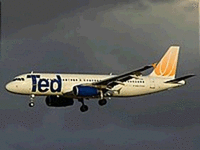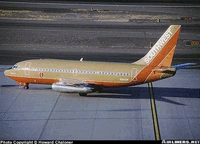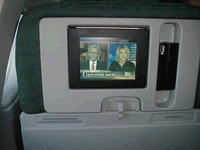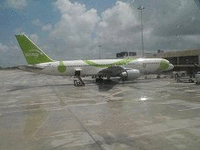A business travel specialist discovered aviation's new frontier in a five-day, eight-airline, first-person trial in May 2004 to judge the service and value of America's low cost airlines, and his tips are still worthwhile.
Not too long ago, a Corporate Travel Director and I discussed the phenomenon of Low Cost Airlines (LCA’s) that have sprung up over the last 15 years. According to Fortune magazine, at the end of 2004 there are 10: Air Tran, Alaska Airlines, America West, American Trans Air, Frontier, Jet Blue, SONG, Spirit, Southwest and TED.
Of those ten, I had only flown on Jet Blue, which isn’t really indicative of all of them; Jet Blue offers 24 channels of video at your seat, snacks, and all-new (purchased within the past four years) Airbus A320s, along with a Transcon/Northeast-Florida route structure. Kennedy Airport is their major hub.
As to the others, as travel professionals, we all book them in some fashion. I had indicated that it might be prudent and interesting to sample a majority of the others to see if all the gossip was true (“the seats are falling apart, flight attendants are rude, everyone of these is akin to riding the Lexington Avenue line in rush hour”) or not. It was a rather unique set of flights, which will be discussed here. For whatever reason, I could not fit Alaska Airlines into this trip; maybe the next time.
MAIDEN FLIGHT; SPIRIT FLIGHT #706 LGA—DETROIT(L.C. Smith Terminal)
11 May 2004
As I started the journey, there was much trepidation—people had been booked on Spirit before and they seemed all right with it. But, I thought, check-in would be at least an hour, the staff rude and unpleasant, the departure gate at LaGuardia cramped, crowded and unmanageable, and my airliner filled with rude people, littered with the detritus of a long torment
Guess what? Everything worked. Almost perfectly.
The oldest (1987) aircraft that I flew for the nine trips had a pleasant, newish blue interior, with flight attendants both young and older. The passengers consisted mostly of leisure travelers and families, with just a fewal “suits” to balance out the load. The MD87 had a somewhat balky air conditioning system that did not work too well on that hot May afternoon on the ground, but performed well at altitude. The cuisine? The almost ubiquitous pretzels. One thing about the LCA’s food — if available, it must be paid for (except for Frontier) and, sometimes, you have to bring your own.
Arrival in Detroit on the 1-hour-20-minute flight was an astonishing 25 minutes — early. Spirit, along with most of the other Detroit Airline Community does not use the new MacNamara Terminal, but the stuck-in-the-60’s L.C. Smith Terminal which, while clean, seemed to be the least pleasant. I do remember being in that same terminal 35 years ago, and it looks like nothing had changed. However, unpleasant surprises like this were the exception for the five days.
SECOND STAGE; SOUTH BY SOUTHWEST #106 DTW-MDW
11 May 2004
Ah Southwest! The carrier that so many of us book all the time, yet not one we travel on too often. Heretofore, this had been the benchmark for a carrier that offered cheap, dependable transportation. This was a good city pair to travel in and there would be a lot of business travelers, judging by the suit/laptop/cell phone combinations that many travelers sported.
Through a scheduling problem, I ended up on a 6pm flight that left two hours late. Southwest uses Midway Airport in Chicago, blessed with a grid of interconnecting runways. In clear weather, this is fine; when the Windy City rains, the air traffic downpour extends throughout a wide area across the country, as I learned.
Southwest has no reserved seats; instead they use a zone system. If you are in the first zone, you have a choice of seats; by the time they board zone 3, you may have a choice of middle seats in the back, if the flight is full like mine was. The crew ran between friendly and perfunctory, depending on whom you dealt with. Their uniforms were casual dress; some of the attendants were wearing shorts! Much has been written about the SWA culture so I won’t attempt to reiterate it.
Drinks are taken by order (no carts) and delivered to you à la Jet Blue with peanuts. All was in order for a one-hour flight. Arrival at MDW was about one-hour-40-minutes late. Chicago’s expanded Midway was as good as Detroit’s L.C. Smith Terminal was bad.
THIRD STAGE; ATA #293 MDW-DEN
12 May 2004
It was off to Midway Airport to sample American Trans Air. My company does book ATA for thrift’s sake, and this was going to be a very valid indication of that thrift. To start the trip, Chicago-Midway was the best airport surprise. I had flown in and out of there quite a while ago, remembering the old terminal with some nostalgia.
Guess what? It’s gone. In its place is a true 21st Century temple of transport, with air, light, windows, and restaurants that you would want to eat at. This was a true delight, with wide corridors, great ventilation and other consumer-friendly features. Security? There was NO wait. Do keep in mind that this was mid-afternoon; other times may not be as pleasant.
On to the flight. Our Boeing 737-800 was relatively new. In contrast to the previous Southwest flight, “suits” were few and far between. An audio system was available for a fee of $2.00 which gave you re-usable headphones. The “snack” was a package of nuts, along with the usual round of beverages. It was about a 2.5-hour flight.
Or so it was supposed to be. The rain-delay plagued this flight as it had the previous night’s flight; our gate pushback was about two minutes late; we took off one-hour-33-minutes later, given weather conditions and Midway’s unique runway system. Arrival in Denver was about one-hour-40-minutes late for a little detour to avoid even more bad weather.
This was the one flight of the nine that seemed to have some negative aspects. My aisle seat towards the front by the galley and front closets revealed a loose piece of closet insulation that was about 24-inches-long and sort of dangled for the flight—nothing to do with the fuselage, just an eyesore. The other aspect that I found a bit disconcerting was the lead flight attendant was incredibly obese. Times have changed since the 1950’s, which had very specific standards for flight attendant’s height and weight, which I completely understand. What does seem worth pondering is if any emergency occurs, would cabin evacuation be affected? Neither of these reservations would deter me from another trip on ATA, but they made me think.
FOURTH STAGE: AMERICA WEST (FREEDOM AIR) # 6708 DEN-PHX
12 May 2004
After a short intra-concourse connection in Denver, America West awaited, in the form of an 80-passenger Canadair Regional Jet, operated by an America West commuter affiliate. Normally, these second-tier flights leave much to be desired in service, operations and equipment. In this case, the flight was textbook, certainly a rare opportunity to experience how travel should be.
With an unseasonable 36 degree F temperature and rain at Denver, I was expecting the worst as far as timing. As if by some master plan, this was not the case. AmWest uses a zoned boarding system like Southwest, which expedites the boarding process. The completely full flight pushed back from the gate on time, and took off in a matter of minutes. East Coast takeoff malaise was not a factor here.
In previous regional jet flights I have taken, the Embraers used have been cramped and too light for any rough weather. Canadair had gotten it right—the CL-600 model we were in had an almost B747 ride, even with a few bumps here and there. I am ample of girth, yet this plane was very comfortable and pleasant. The two flight attendants were capable and pleasant, serving drinks, pretzels and nuts to all on this one-hour-21-minute flight. With all regional jets, the overhead is not adequate for most carry-ons. I had to check my wheeled bag at the gate in DEN, and then retrieve it on the tarmac plane-side in Phoenix.
Unlike flying in the East, the almost 600-mile flight does not go over any large population centers, just many mountain peaks not so far below the 31,000-foot altitude, quite a picture for this New Jersey-born author. Of the nine flights taken, this was number two in the table of surpassing customer expectations.
To add more good news, we arrived in Phoenix 15 minutes early!
FIFTH STAGE: AMERICAN WEST # 754 PHX-LAS
12 May 2004 – HUB TO HUB A LA HP
After an hour’s connecting time at Phoenix, I joined my fellow 150-plus passengers to fly to Las Vegas on one of HP’s A320’s. My expectation that this flight would be filled with masses in ten-gallon hats, inveterate bargain-seeking, hard-core gamblers, and a few not belonging to either group. I was sadly mistaken, even though the idea of a flight linking these two Western metropolises, the flight’s duration, and the clientele mimicked the Delta Shuttle between LaGuardia and Boston. Instead, there were more tourists and many deadheading flight crews (PHX and LAS are America West hubs). How far apart are these two cities? The same distance as LGA and Rochester NY or about 300 miles.
Cabin service was more perfunctory than the previous segment on HP; the audio system was there, but there was no headset distribution (too short a flight?). The weather was smooth at our 26,000 foot cruise altitude, cabin announcements kept to a minimum, befitting an evening departure. America West for my first two trips proved to be decent means of transportation.
SIXTH STAGE: TED #1410 LAS-DEN
13 May 2004 – LEAVING LAS VEGAS
I like Las Vegas, even if only for a 16-hour stay. My flight plans dictated a ride on Ted, United’s low-cost carrier. I had been a passenger on this particular flight schedule in December ’03 when it was a United Airlines flight. That trip had been fine, but no different from any other United Airlines medium sector flight.
This was different. The professional and delightful flight crew put a pleasant note on this flight. United’s air-to ground flight communications audio was on channel 12, the same as regular UA (nice touch!), and made the flight more interesting. The business/leisure mix tilted towards the business end, with many convention attendees from L.V. on their way back. Timing was good with a two-minute late gate pushback, and a five-minute early arrival at DEN. Snack service was served efficiently with both peanuts and mini-pretzels served.
Also of note for this flight is that most passenger loads on any carrier out of Las Vegas tend to be fairly high, but the Airbus 320 used on this flight, coupled with economy plus seating, made the journey more comfortable.
Before I knew it, we were at the Concourse B gate at Denver.
SEVENTH STAGE: FRONTIER #426 DENVER-ATLANTA
13 May 2004 – CAN I BE DREAMING?
After six flights, I felt that something was missing from my journeys — two things, actually. One was the lack of food that wasn’t from an airport establishment, the other was video entertainment.
Well, I have seen the future, and it is called Frontier. They offer both food and video, on flights as short as my 2.5-hour trip from Denver to Atlanta, along with two beverage services. On a brand new Airbus 318.
My flight pushed back from close-in Concourse B at DEN about 10 minutes late, filled with mostly leisure passengers, and a few businesspeople on the 6:40pm departure. The crew of three flight attendants was efficient and gracious. The snack served was a wrap, with a choice of chicken, beef or vegetarian (all fresh and tasty) along with a bag of Fritos. This was certainly a crowd pleaser, at least by most traveler’s standards. The Real-Time T.V. was also a plus, The video is similar to Jet Blue’s system, offering 24 channels of real-time TV. While not offering everything that one might want to see, there was a rather large concentration of sports channels. It was free until take-off, then $5.00 for the duration of the flight. The reception was excellent and I was able to watch W-NBC’s 11pm news in my “armchair” winging east over Alabama and Georgia.
One of the unique things about the LCA’s is that some of the hub airports that are “owned” by the dominant carrier (i.e. Atlanta by Delta) mean that the new guys such as Frontier are given space as far as possible from the ground transportation area. My 20-minute-late Frontier flight was relegated to a far-off concourse upon arrival. I was then treated to an un-air-conditioned ride on one of Atlanta Airport’s people movers. This made it about 45 minutes from gate to ground transport.
But all in all, these folks know how to take care of you in the air. This was, of all the eight carriers involved, the best experience.
EIGHTH STAGE: AIRTRAN #237 ATLANTA-WEST PALM BEACH
13 May 2004 – ALMOST HOME
Air Tran is the second largest carrier that serves Atlanta after Delta, which makes it a large player out of there. I sampled their service out of ATL aboard this flight, which was 1 hour and 20 minutes to West Palm Beach. I found the Boeing 717 to be comfortable, clean, and staffed by a very capable flight crew. The on-time pushback was beginning to be a rather normal occurrence in my travels; quite different from what usually happens.
As we achieved our cruising altitude, the drink cart came out, with one of Air Trans unique policies. Although cash is legal tender, they only accept credit or debit cards for drinks, the only time I ran into this. Arrival at PBI was 20 minutes early! AirTran certainly seemed to have their act together.
NINTH STAGE: DELTA SONG #2594 WPI-LGA
14 May 2004 – A SONG’S THE THING
My last of the nine flights was on SONG, Delta’s answer to Jet Blue. Having flown in this market since the late 1960’s this would prove to be an interesting metamorphosis for a city pair that is filled with leisure passengers, a large proportion seniors. SONG was set up by Delta to combat the low cost airlines at their own game, and to make sure that their market share did not decline.
This was the most anticipated flight. Could an old dog learn new tricks? The check-in area looked the same as the last time I flew Delta out of PBI; the employees and signage had their own new style. The Boeing 757 we were on was a bit different in style as well; there is a forward cabin and a rear cabin, all with three abreast seating. A dish TV with 24 video and 24 audio channels was at each seat. And each seat had a menu for all the unusual food choices available from the food cart, ranging from Cosmos to chicken salads to protein bars. Much to order, to munch on, and drink on for a cost — sort of Jet Blue on steroids. This was also the largest aircraft operated by any of the low cost airlines, 199 seats with four flight attendants. Another difference on this two-hour-24- minute flight included a safety instruction audio given with a salsa lilt, which was hard to understand, especially, I’ll bet, by the over 70-year-olds who comprised a significant proportion of the passengers.
By this time, I was happy to be on a seat that moved and got me where I wanted to go—SONG took care of that ably, and for Delta it represented a significant culture change. And, speaking of culture changes, we arrived at LGA right on schedule.
After eight airlines, nine flights and eight different types of airplanes, it was good to be on the ground again, and not have to fly somewhere the next day.
EPILOGUE
Armed with all this information, there was much that was learned, far too much to inform in the scope of this report. Importantly, the point of this fact-finding was driven by one thought—Are the LCA’s acceptable enough for corporate travelers?
My answer, based on observation of nine of them (o.k. Alaska, your time will come) is a resounding “Yes!” With less than a handful of issues over nine flights, these operations have figured out small ways to make their travelers feel contented and like people once again. While most names do not roll off one’s tongue as easily as the majors, they offer, for the most part, a pleasant travel experience, as long as operations are not affected by weather or ATC control. I cannot cover any scope other than as a traveler; How they stack up mechanically against each other and against the majors is an unknown. However, for the most part, the LCA’s planes tended to be newer.
[Editor’s Note: Although some of these airlines are no longer flying, and others have been scooped up by the major carriers, we think Ralph’s tips on navigating the low cost skies are so useful, that you’ll be glad you read this story.]
Dear Reader: This page may contain affiliate links which may earn a commission if you click through and make a purchase. Our independent journalism is not influenced by any advertiser or commercial initiative unless it is clearly marked as sponsored content. As travel products change, please be sure to reconfirm all details and stay up to date with current events to ensure a safe and successful trip.






I would like to visit every day, thanks for your sharing.